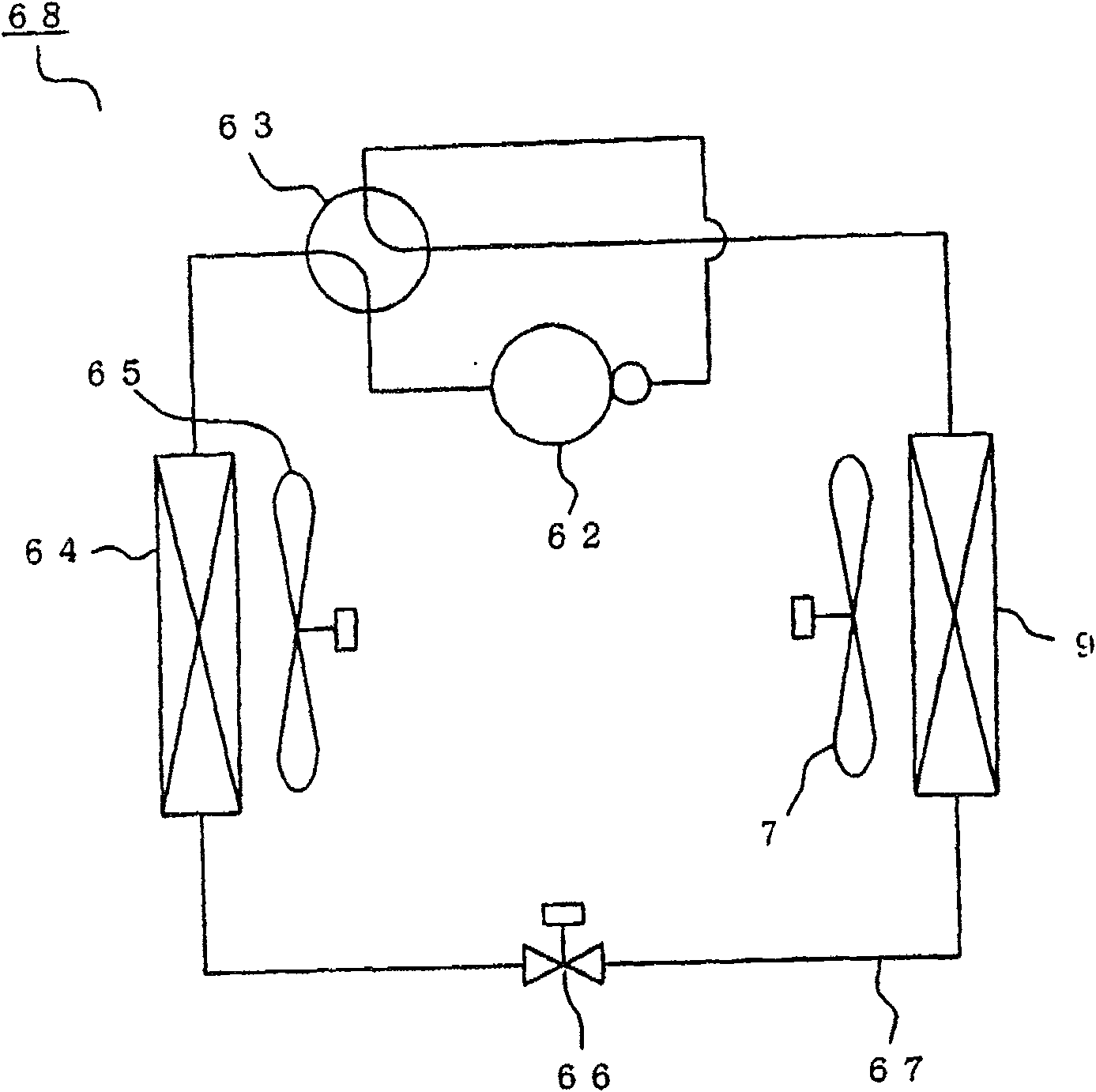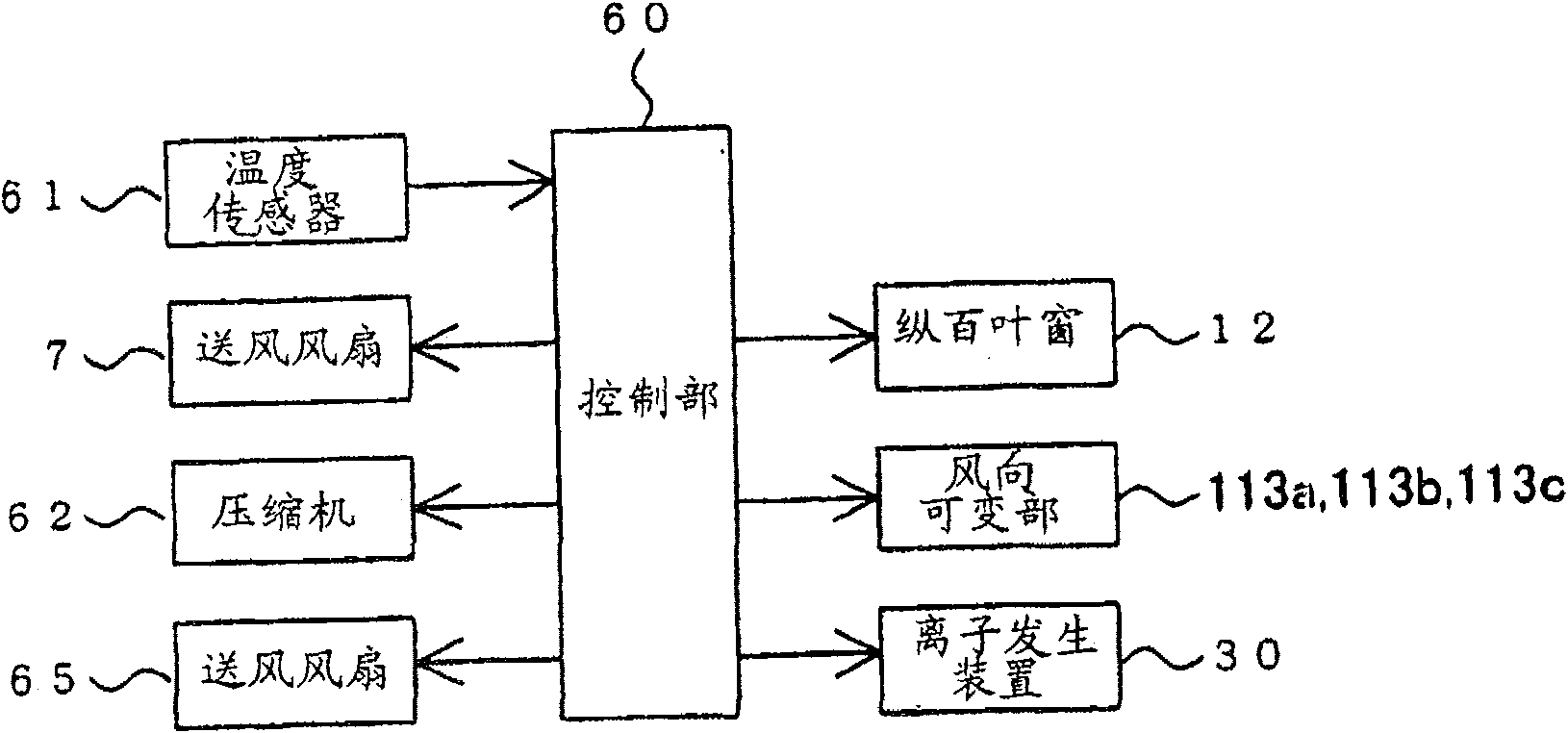Air conditioner
An air conditioner, air conditioning technology, applied in air conditioning systems, space heating and ventilation details, control inputs involving air characteristics, etc., can solve problems such as user discomfort and inability to switch, achieve comfortable performance, prevent Unpleasant, efficiency-enhancing effects
- Summary
- Abstract
- Description
- Claims
- Application Information
AI Technical Summary
Problems solved by technology
Method used
Image
Examples
no. 1 Embodiment approach
[0067] figure 1 It is a side sectional view showing the air conditioner of the first embodiment (showing Figure 8 D section). An indoor unit 1 of an air conditioner has a main body held by a casing 2, and a front panel 3 having a suction port 4 on the front side and a front side thereof is detachably attached to the casing 2.
[0068] The casing 2 is provided with a claw portion (not shown in the figure) on the rear side, and the claw portion cooperates with a mounting plate (not shown in the figure) installed on the side wall W 1 of the living room to support the casing 2 . An air outlet 5 is provided in a gap between the lower end of the front panel 3 and the lower end of the cabinet 2 . The air outlet 5 is formed in a substantially rectangular shape extending in the width direction of the indoor unit 1, and is provided facing forward and downward.
[0069] Inside the indoor unit 1 , a blower path 6 communicating from the suction port 4 to the blower port 5 is formed. ...
no. 2 Embodiment approach
[0129] then, Figure 16 It is a side cross-sectional view showing the air conditioner indoor unit 1 of the second embodiment. with the above Figure 1 to Figure 15 The parts that are the same as those of the first embodiment shown are denoted by the same symbols. In this embodiment, instead of the airflow direction variable sections 113a, 113b, and 113c of the first embodiment, airflow direction variable sections 114a and 114b are provided. Other parts are the same as those of the first embodiment.
[0130] The wind direction variable parts 114a, 114b are arranged at the blower outlet 5, and both surfaces are made of flat plates. The rotation shafts 114c, 114d rotatably support the wind direction variable parts 114a, 114b, and are rotationally driven by a drive motor (not shown). Therefore, the wind direction variable parts 114a and 114b are constituted by a wind direction plate whose direction is changed by driving of a drive motor. Moreover, the rotating shaft 114c is p...
no. 3 Embodiment approach
[0152] then, Figure 22 It is a side sectional view which shows the air conditioner indoor unit 1 which concerns on 3rd Embodiment. with the above Figure 16 ~ Figure 21 The same parts of the second embodiment shown are denoted by the same symbols. In this embodiment, instead of the wind direction variable parts 114a and 114b of the second embodiment, wind direction variable parts 115a and 115b are provided.
[0153] In addition, in order to detect the rotation speed of the blower fan 7 in the indoor unit 1, a rotation speed detection unit (not shown) for detecting the volume of conditioned air sent from the air outlet 5 is provided. in the above Figure 4 Among them, the output of the rotational speed detection unit is input to the control unit 60, and the wind direction variable units 115a and 115b are driven based on the detection result of the rotational speed detection unit. Other parts are the same as the second embodiment.
[0154] The wind direction variable parts...
PUM
 Login to View More
Login to View More Abstract
Description
Claims
Application Information
 Login to View More
Login to View More - R&D
- Intellectual Property
- Life Sciences
- Materials
- Tech Scout
- Unparalleled Data Quality
- Higher Quality Content
- 60% Fewer Hallucinations
Browse by: Latest US Patents, China's latest patents, Technical Efficacy Thesaurus, Application Domain, Technology Topic, Popular Technical Reports.
© 2025 PatSnap. All rights reserved.Legal|Privacy policy|Modern Slavery Act Transparency Statement|Sitemap|About US| Contact US: help@patsnap.com



